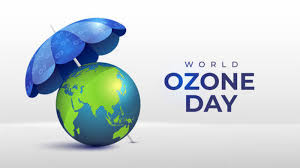On International Ozone Day, scientists and policymakers have highlighted one of the few unequivocal successes in global environmental action: the recovery of the ozone layer. Thanks to the Montreal Protocol, the protective shield that guards life on Earth from harmful ultraviolet radiation is healing and could return to its 1980s strength within a few decades.
A Global Treaty That Worked
The Montreal Protocol, signed in 1987, is widely regarded as the most successful international environmental agreement. It mandated the phasing out of chlorofluorocarbons (CFCs) and other ozone-depleting substances once used in everyday products like refrigerators, air conditioners, and aerosol sprays. At the time, satellite data showed alarming “holes” in the ozone, particularly over Antarctica. By bringing nearly every nation into compliance, the treaty slowed the damage and set the stage for recovery.
Signs of Healing in the Atmosphere
Recent reports from the United Nations Environment Programme (UNEP) and the World Meteorological Organization (WMO) indicate that the ozone layer is thickening across much of the globe. If current trends continue, scientists estimate the ozone over much of the world could recover to 1980s levels by 2040, and over Antarctica by around 2066. The reduction of harmful ultraviolet rays will significantly cut risks of skin cancer, cataracts, and damage to crops and marine ecosystems.
Lessons for the Climate Crisis
The ozone story is being hailed as proof that coordinated global action can reverse environmental damage. Experts note that while the Montreal Protocol was designed for ozone protection, it has also delivered climate benefits, since many ozone-depleting chemicals are potent greenhouse gases. The success, however, comes with a cautionary reminder: climate change remains far more complex, requiring deeper political will and sustained cooperation.
As the world celebrates Ozone Day, the healing of the ozone layer stands as a testament to science-driven policy and international solidarity. For future generations, it offers a rare piece of good news — that when nations act together, even global crises can be solved.


